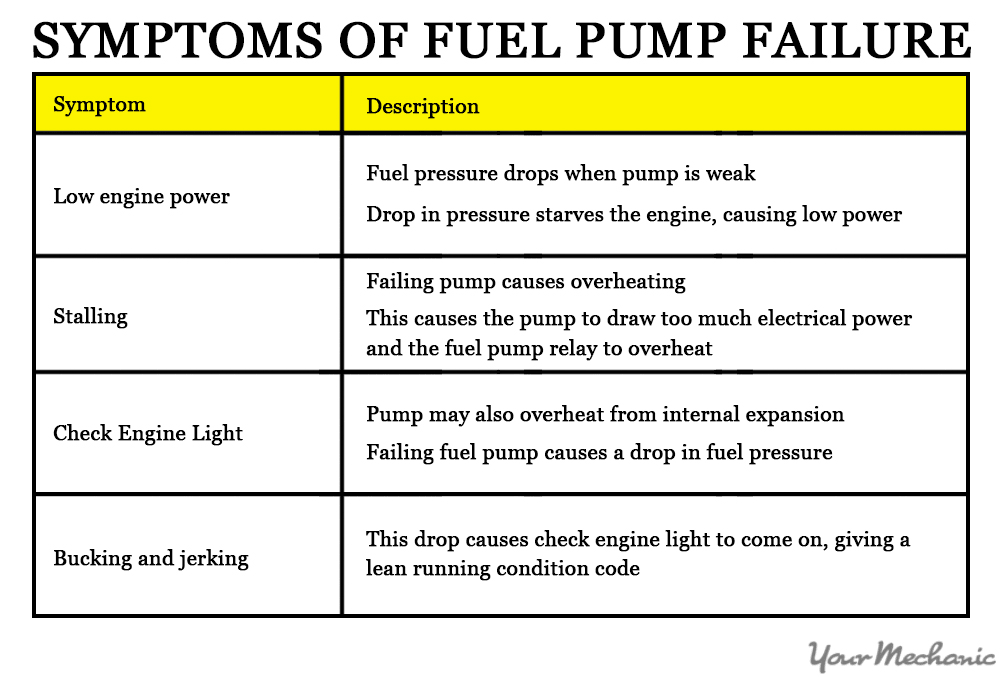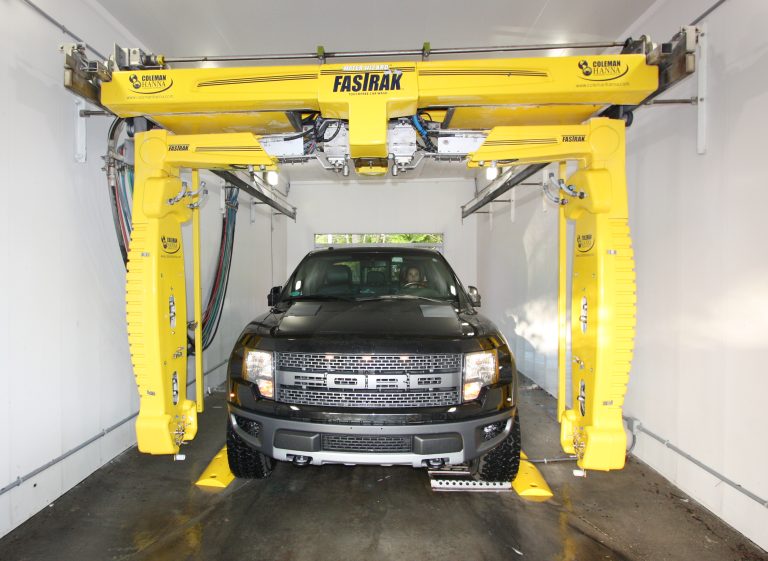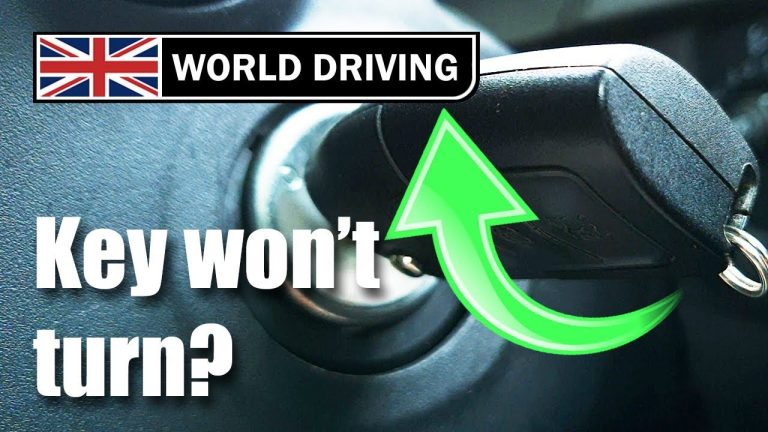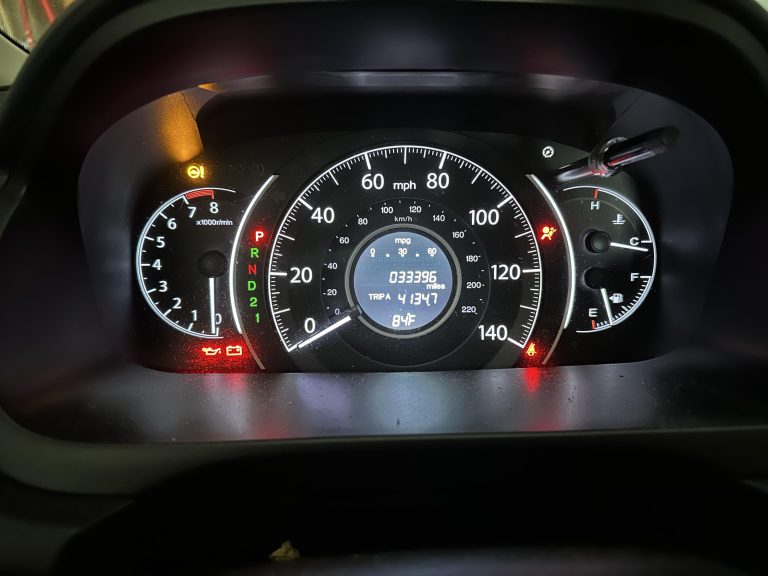Bad Fuel Pump Symptoms: Detect and Resolve Fast!
Bad fuel pump symptoms include engine sputtering, difficulty starting, stalling, loss of power under stress, and decreased fuel efficiency. You may also hear a whining noise from the fuel tank. If left unchecked, it can lead to engine misfires or complete failure to start.
Panic sets in as you wonder, “What’s wrong? ” One common culprit might be a failing fuel pump. Spotting the signs early can save you from a roadside nightmare and costly repairs. By understanding the symptoms of a bad fuel pump, you can keep your car running smoothly and safely.
This article will guide you through the warning signs you should never ignore, ensuring your vehicle stays in top shape and your peace of mind intact. Stay with us and discover how you can prevent these issues before they leave you stranded.

Credit: www.youtube.com
Bad Fuel Pump Symptoms
Common Signs Of A Failing Fuel Pump
| Symptom | Description |
|---|---|
| Engine Sputtering | Intermittent jerking or hesitation, especially at high speeds. |
| Difficulty Starting | Engine cranks but struggles or fails to start. |
| Stalling | Car unexpectedly shuts off while driving or idling. |
| Loss of Power Under Load | Reduced performance when accelerating or driving uphill. |
| Whining Noise from Fuel Tank | High-pitched sound coming from the rear of the car. |
| Decreased Fuel Efficiency | Increased fuel consumption due to inconsistent fuel delivery. |
| Engine Misfires | Irregular engine firing caused by lack of proper fuel supply. |
Strange engine noises or trouble starting can point to a bad fuel pump. Experiencing power loss while driving uphill or under stress might indicate fuel delivery issues. Unusual sputtering or stalling, especially at high speeds, often signals a failing pump needing attention.
A failing fuel pump can turn your smooth drive into a bumpy ride in no time. If you’ve noticed your vehicle acting up, it might be trying to tell you something about the health of its fuel pump. Recognizing the symptoms early can save you from unexpected breakdowns and costly repairs. Below are some common signs that your fuel pump might be on its last legs. Check if your car is showing any of these symptoms and take action before it leaves you stranded.
Read more: Car Shuts off When Stopped Or Slowing Down: Causes & Fixes
1. Engine Sputtering At High Speeds
Imagine cruising down the highway, and suddenly your engine starts sputtering. This could be a sign that your fuel pump isn’t delivering fuel consistently. When the pump fails to maintain steady pressure, your engine doesn’t get the fuel it needs, causing those annoying sputters.
2. Difficulty Starting The Car
Have you noticed your car struggling to start in the mornings? This might not just be a sign of a cold engine. A failing fuel pump can lead to insufficient fuel reaching the engine, making it hard to start your car. Next time you face this issue, consider checking the fuel pump.
3. Stalling At High Temperatures
Does your car stall after it heats up? It’s not always the engine overheating. A faulty fuel pump can cause your car to stall when the engine reaches higher temperatures. This happens because heat can exacerbate the pump’s inability to maintain fuel pressure.
4. Loss Of Power Under Stress
Ever tried climbing a steep hill and felt your car losing power? This could indicate your fuel pump is struggling to supply enough fuel during demanding situations. If your vehicle repeatedly loses power under stress, it might be time to inspect the pump.
5. Surging Or Jerking Movements
Notice your car surging forward unexpectedly or jerking while driving? This erratic behavior can be traced back to an inconsistent fuel supply. A failing fuel pump might be delivering fuel unevenly, leading to these unpleasant movements.
6. Decrease In Fuel Efficiency
Are your fuel costs suddenly higher than usual? A malfunctioning fuel pump may lead to poor fuel efficiency, as the engine struggles to get the right amount of fuel. Keep an eye on your fuel consumption; it might be a subtle sign of a bigger problem.
7. Unusual Noises
Have you heard whining noises coming from your fuel tank? These noises often mean the fuel pump is working harder than it should. Pay attention to any unusual sounds, as they might indicate the pump is nearing failure. Recognizing these symptoms early can prevent bigger problems down the road. If your car is showing any of these signs, it’s wise to get it checked by a professional. Have you experienced any of these issues? What did you do to solve them? Let us know in the comments below!
Read more: Ticking Noise in Engine: Uncover Hidden Causes Today
Impact On Vehicle Performance
A bad fuel pump can drastically affect your vehicle’s performance. The pump ensures fuel reaches the engine efficiently. When it fails, the engine struggles. Understanding these symptoms helps in timely repairs.
1. Poor Acceleration
Acceleration becomes sluggish. The engine lacks power. This can cause delays in reaching desired speed.
2. Engine Sputtering
The engine may sputter at high speeds. This indicates inconsistent fuel flow. A clear sign of a faulty pump.
3. Difficulty Starting
Starting the engine might take longer. The engine cranks but hesitates to start. This symptom often points to fuel pump issues.
4. Stalling
The vehicle may stall unexpectedly. Especially during acceleration or idling. This happens due to interrupted fuel supply.
5. Unusual Noise
Listen for whining noises from the fuel tank. This noise suggests pump malfunction. Ignoring it can lead to more problems.
Diagnostic Tools And Techniques
Struggling to start your car or noticing engine sputtering might indicate a bad fuel pump. Listen for unusual noises from the fuel tank area. Experiencing poor acceleration or frequent stalls often points to fuel pump issues. Recognizing these symptoms early can prevent further engine complications.
Diagnosing issues with your car can be a daunting task, especially when it comes to identifying a bad fuel pump. But fear not! There are several diagnostic tools and techniques that can help you pinpoint the problem. Understanding how to use these tools can save you time, money, and frustration. Let’s delve into the specifics and see how you can become a pro at diagnosing fuel pump issues.
Using A Fuel Pressure Gauge
A fuel pressure gauge is one of the most reliable tools for diagnosing a faulty fuel pump. It measures the pressure in the fuel system, which can indicate whether the pump is working correctly. Connect the gauge to the fuel rail and start the engine. If the pressure is lower than the manufacturer’s specifications, it’s a sign that the pump might be failing.
Listening For Unusual Noises
Your ears can be a valuable diagnostic tool. A failing fuel pump often makes a whining or humming noise. Turn your key to the “on” position without starting the engine. Listen carefully at the rear of the car. If you hear an unusual sound, it might be time to consider a replacement.
Performing A Voltage Test
A voltage test can reveal electrical issues affecting the fuel pump. Use a multimeter to check the voltage at the pump’s connector. Ensure the reading matches the vehicle’s specifications. If the voltage is off, the issue might not be the pump itself but rather an electrical problem.
Inspecting The Fuel Filter
Sometimes, a clogged fuel filter can mimic symptoms of a bad fuel pump. Remove and inspect the filter for debris. Replacing a dirty filter can improve fuel flow and potentially solve the problem without needing a new pump.
Consulting An Obd-ii Scanner
An OBD-II scanner can provide valuable insights by reading error codes from your car’s computer. Plug it into the diagnostic port and look for codes related to the fuel system. This tool can guide you to the exact issue, making it easier to decide on your next steps.
Seeking Professional Assistance
If you’re still unsure, consulting a professional mechanic might be the best option. They have the experience and tools to accurately diagnose and fix the problem. Remember, investing in a professional diagnosis can prevent further damage and costly repairs down the road. Using these tools and techniques can empower you to tackle car issues with confidence. Have you tried any of these methods before? What was your experience? Share your thoughts in the comments and let’s learn together!

Credit: www.facebook.com
Quick Fixes And Temporary Solutions
We’ve all been there: you’re driving along, and suddenly, your car starts acting up. The culprit might just be a bad fuel pump. While replacing it is the long-term solution, sometimes you need a quick fix to get you to your destination. Let’s dive into some practical and temporary solutions that can save your day.
Fuel System Cleaner
A fuel system cleaner can help to unclog the fuel lines temporarily. It’s simple to use and can be added directly into your fuel tank. This solution might give your pump a bit more breathing room, but remember, it’s only a stopgap measure. The cleaner helps to remove deposits that may be causing blockages, offering a smoother drive.
Fuel Pressure Regulator Adjustment
Adjusting the fuel pressure regulator might give your pump a momentary boost. It’s a quick tweak you can do if you have some mechanical know-how. By increasing pressure slightly, you may enhance fuel delivery, but be cautious not to overdo it. It’s a bit like giving your car a pep talk, urging it to perform just a little better.
Tap On The Fuel Tank
This may sound unconventional, but tapping the fuel tank gently can sometimes work wonders. If the fuel pump is stuck, a few taps can jolt it back to life, allowing the fuel to flow again. It’s akin to the old television trick where a light tap would fix reception issues, sometimes a simple nudge is all it takes.
Limit Your Driving
Consider limiting your driving to short distances. This reduces strain on the fuel pump, giving it a chance to cool down. Plan your trips wisely and avoid long drives until you can replace the pump. It’s a strategic move that buys you time, ensuring your car isn’t pushed to its limits.
Have you ever found yourself stranded, and a quick fix got you back on the road? These temporary solutions may not be perfect, but they can be lifesavers in a pinch. Remember, they’re just stopgaps until you can tackle the real issue. What other quick fixes have you tried when dealing with car troubles? Share your experiences!
Long-term Solutions And Preventive Measures
Identifying bad fuel pump symptoms early can save costly repairs. Regular maintenance and using quality fuel are key. These measures help ensure a smooth running vehicle, minimizing the risk of pump failure.
Long-term solutions and preventive measures are crucial for maintaining your car’s fuel pump and ensuring smooth driving experiences. A faulty fuel pump can lead to frustrating breakdowns, but with the right strategies, you can avoid these issues. Let’s dive into practical tips that can keep your fuel pump in top condition and prevent unexpected problems.
Regular Maintenance Checks
Regularly scheduled maintenance checks are vital. Make it a habit to have your fuel system inspected during routine visits to your mechanic. This can help detect wear and tear early, saving you from costly repairs later.
Quality Fuel Selection
Always opt for high-quality fuel. Poor fuel quality can lead to sediment build-up, causing your fuel pump to work harder than necessary. It’s like feeding your body healthy food to stay fit; your car needs clean fuel to run efficiently.
Keep Your Tank Full
Keeping your fuel tank above a quarter full can prevent overheating. A full tank helps cool the fuel pump and reduces the risk of it burning out. It’s a simple habit that can extend the life of your pump.
Fuel Additives
Consider using fuel additives. These can clean and protect the fuel system, ensuring smoother operation. They’re like vitamins for your car’s engine, enhancing performance and longevity.
Listen To Your Car
Pay attention to unusual noises. A whining sound from the fuel tank might signal pump issues. Early detection can prevent further damage. It’s like listening to your body’s signals; your car also communicates when something’s wrong.
Professional Assessment
Don’t hesitate to seek professional help if you suspect a problem. Experienced mechanics can provide accurate diagnostics and solutions. Think of it as getting expert advice to keep everything running smoothly. Regularly implementing these strategies can save you time and money in the long run. Your vehicle deserves the best care, and you have the power to provide it. Are you doing enough to protect your car’s fuel pump?

Credit: www.youtube.com
Frequently Asked Questions
What Are Common Signs Of A Bad Fuel Pump?
A whining noise, engine sputtering, and stalling are common signs. Reduced fuel efficiency can also indicate issues.
How Does A Bad Fuel Pump Affect Driving?
A bad fuel pump can cause engine misfires. It may also lead to poor acceleration and stalling.
Can A Faulty Fuel Pump Prevent Starting?
Yes, it can stop your car from starting. It fails to deliver fuel to the engine.
Is A Fuel Pump Failure Dangerous?
Yes, it can be. Sudden stalling in traffic is risky. Immediate attention is advised.
How Long Do Fuel Pumps Usually Last?
Fuel pumps typically last over 100,000 miles. Regular maintenance can extend their life.
Conclusion
A faulty fuel pump can cause many car issues. Your engine may stall or not start. Poor fuel efficiency is another sign. Listen for unusual noises from the fuel tank. These symptoms should not be ignored. They can lead to bigger problems.
Consult a mechanic if you notice these signs. Regular checks can prevent further damage. Keep your vehicle in good health. It ensures safety and reliability. Addressing fuel pump issues early saves time and money. Stay informed, stay safe. Your car will thank you.







